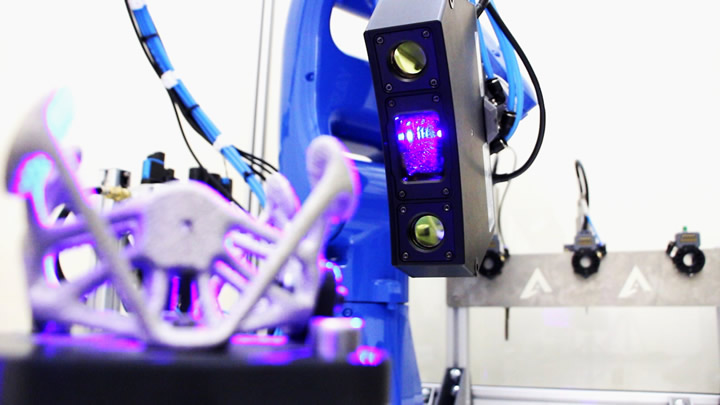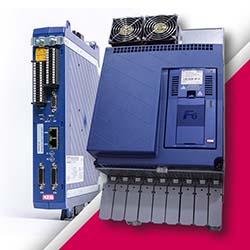The Evolution of Additive Manufacturing: How Automation Redefines Post-Processing Standards

Since their earliest inception, metal additive manufacturing (AM) technologies have provoked much discussion and debate around the ‘revolution’ of manufacturing thanks to the unprecedented capabilities these technologies afford for producing complex metal parts and components. Wherever your opinion lies on the revolutionary scale — from evangelist to hard cynic — it is hard to argue against the observable disruption that AM technologies have caused to many traditional manufacturing methods with the capacity for greater design freedom and production on-demand for a range of applications across sectors as diverse as aerospace, medical and energy.
Across the entire process chain, there have been advancements to improve software for design and execution, the metal AM processes themselves, and the palette of materials for production applications. However, one of the major hurdles for wider AM adoption for production remains at the post-processing stage. For years it was the ‘dirty secret’ that no one really talked about much, even while those tasked with carrying it out complained about it quite a bit. I can say that without hesitation and with confidence because I was one of those people.
In 2024, post processing metal parts is still a bottleneck in the AM process chain because it is still very often a manual, labor-intensive, messy (filthy, actually) and sometimes risky task. As well as, and because of all of that, the manual post processing of metal parts is ultimately prone to inconsistencies.
The Challenges Involved
The term ‘post processing’ sounds innocuous enough, but it is actually an umbrella term for any or all of the various finishing techniques employed to achieve the desired final properties and aesthetics of a metal part once it has been built. These can be numerous, and include but are not limited to powder removal, support removal, surface finishing, heat treatments, and quality inspection. Reliance on manual labor to complete these operations throws up some obvious challenges.
Let’s start with time. For anyone that has not stood at a workbench tasked with removing the supports from a complex metal component with channels, holes and overhangs, tools in gloved hands and protective goggles on, I can tell you it takes a long time. Hours in fact. For just that one component. It’s also hard, unpredictable and at times, grim.
Now consider that while metal AM processes themselves have evolved to ensure more repeatable parts, these gains can all be lost at the post processing stage, where inconsistencies can emerge. It’s not all that surprising really as manual processes are always going to be susceptible to human error, which can manifest as variations in surface quality and dimensional accuracy. For a batch of parts this can result in overall part inconsistencies which have the potential to significantly impact the functionality and reliability of the final products for the application they are intended to fulfil.
Then, of course, there are the costs associated with manual labor. And we are not talking basic costs. This is skilled work and it requires skilled workers. Moreover, metal AM is reaching a point in its evolution where the technologies themselves are being considered as scalable for higher volumes of parts. The same cannot be said for manual processes, which are the antithesis of scalable.
Last — but by no means least — for any ethical employer, manual post processing throws up a raft of safety concerns. It is a hazardous environment and requires serious health and safety considerations.
Automation Can Redefine Post-Processing
Manufacturers have long faced these challenges for post processing metal parts with few options for overcoming them. Without alternative solutions the ability to unlock the full potential of metal AM processes for scaled up production will remain limited. A key for advanced manufacturers is now emerging with new automation technologies dedicated to post processing. Leveraging various automation technologies — including robotics, machine vision and advanced software programming — to precisely and repeatably automate various steps involved in the post-processing workflow of metal parts is redefining capabilities and standards for this part of the metal AM process chain.
Automated systems undeniably perform the tasks they are programmed to do with greater precision and repeatability compared to manual methods. Robots combined with advanced programming software and equipped with specialized tools can remove powder and support structures and finish surfaces to the required levels. This, then, improves surface quality, ensures tighter dimensional tolerances, and provides greater consistency across batches of metal components. In addition, machine vision systems and sensors can be integrated with the robots to perform real-time inspections, ensuring that parts meet specific quality criteria.
Automated post processing solutions can also significantly reduce the costs associated with manual labor, especially when it comes to production runs at higher volumes. In addition, such solutions can enable optimized material usage and thus minimize waste, to contribute further cost savings.
The automation of hazardous tasks using robotic systems can significantly improve worker safety in the post-processing environment. The risk of injury, and any subsequent claims, is eliminated, and of course automated solutions are inherently scalable in a way that manual labor is not. These solutions can easily be adapted to handle larger production volumes without any compromise to the quality or consistency of the parts. This enables manufacturers to leverage the benefits of AM for larger projects and remove the bottleneck of manual post-processing.
Automation for Good
The pursuit of operational excellence within the constantly evolving realm of manufacturing can be achieved with the thoughtful adoption of automation technologies. More specifically in the dedicated, nascent field of automated metal post-processing technologies, Rivelin’s Netshape® robots can play a pivotal role. These automated robots embody a profound leap towards the efficiency and precision that users of metal AM processes are demanding.
Rivelin’s Netshape® robots enable the automated removal of supports, precision machining, and surface finishing. This enables the streamlining of post processing operations and removes the traditional bottleneck as well as elevating — and ensuring — the quality of the final product.
When we founded Rivelin Robotics, necessity — and painful experience — truly was the mother of invention. NetShape® Robots represent an acknowledgment of the limitations inherent in traditional methodologies together with a sincere commitment to overcoming these challenges through innovation. This approach is intended to nurture a culture of continuous improvement and innovation, ensuring that AM remains both competitive and sustainable.
As the application of Rivelin's Netshape® robots expands within the manufacturing ecosystem, we further intend to underscore a broader commitment to operational excellence that transcends mere efficiency gains. To reflect a deep understanding of the symbiotic relationship between technology and human expertise, where automation serves not to supplant but to supplement and enhance the capabilities of the workforce. This harmonization of human ingenuity with robotic precision fosters an environment where creativity and technical excellence coalesce, driving forward not just the operational goals but also contributing to a safer and more sustainable and responsible manufacturing landscape.
In this context, operational excellence is achieved not merely through the optimization of processes but through a holistic approach that values sustainability, quality, and the well-being of both the workforce and the community it serves. In this way the adoption of automated AM technologies like those offered by Rivelin represents a thoughtful step towards a future where manufacturing is defined by its adaptability, efficiency, and ethical stewardship.
Comments (0)
This post does not have any comments. Be the first to leave a comment below.
Featured Product

